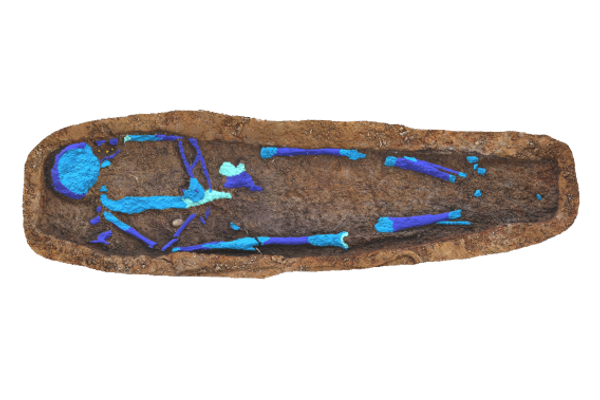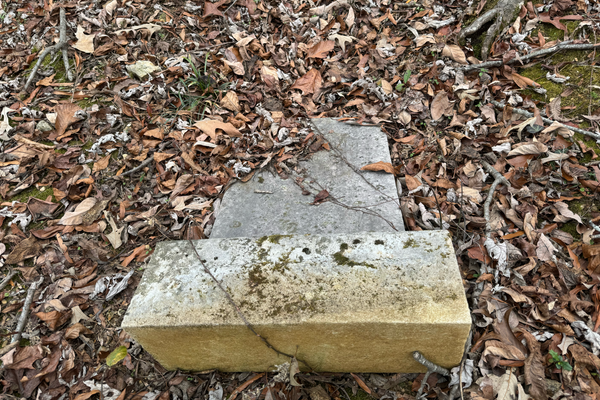Clover Adams’ Memorial: From a Husband Who Would No Longer Speak Her Name
Marian “Clover” Hooper Adams led a remarkable life for a woman of her time. Her exploits included volunteering during the Civil War, engaging with an array of intellectuals, possibly ghostwriting a novel, and most notably pioneering the field of portrait photography. However, despite her many accomplishments in life, today she may be best known as the subject of one of Washington, DC’s most haunting sites: the Adams Memorial.
Clover Adams was born to to a wealthy Boston family. Her mother was transcendentalist poet Ellen Sturgis Hooper; guests in her home growing up included Ralph Waldo Emerson, Nathaniel Hawthorne, and Henry David Thoreau. Before marrying, Clover volunteered for the United States Sanitary Commission during the Civil War, raising funds, cooking, and tending to the wounded.
In 1872, she married Henry Adams, author, philosopher, and scion of the Boston Adams family whose ancestors included former presidents John Adams and John Q. Adams. The couple then relocated to Washington, DC. There they cultivated a circle of friends that included novelist Henry James. Clover’s reputation as an urbane yet troubled woman has caused speculation that she was the inspiration for Henry James’s novel Portrait of a Lady.
Fascinated by photography, Clover taught herself the art at the age of 40. Her autodidacticism belies the sophistication of her work, which displays a keen eye for lighting and framing. A skilled amateur, she photographed Supreme Court Justice Oliver Wendell Holmes, Secretary of State William Evans, and some of the more famous Adams family members. She produced a great body of work about domesticity and the role of women in American society.
A portrait of Miriam Choate Pratt, Alice Greenwood Howe, and Alice Pratt taken by Clover Adams at Smith’s Point on Boston’s North Shore (via masshist.org)
A self-portrait by Clover Adams from the 1860s (via Wikimedia)
Despite her many achievements, Clover was plagued by mental illness and depression. She took her own life in 1885 at the age of 42, the renown she gained in her short two years as a photographer seemingly unable to assuage her demons. Clover killed herself by swallowing potassium cyanide, a chemical she had used to develop her photographs, making a final enigmatic statement.
Following her death, Clover’s husband Henry became notoriously reclusive about his late wife, burning all her correspondence and refusing to discuss her. In 1886, the year following Clover’s death, Henry toured Japan with artist John LaFarge. Upon his return, Henry commissioned Irish-American sculptor Augustus Saint-Gaudens to memorialize her by casting a bronze statue. Upon his return he instructed Saint-Gaudens to use Buddhist philosophy’s take on death and grief as inspiration, a philosophy he had encountered in Japan.
The finished sculpture is not of Clover herself. It instead depicts an anonymous figure representing the range of Henry’s emotions surrounding her death, as well as the abstract nature of life and death. It depicts an intentionally androgynous figure peering from behind a cascading shroud, its expression a serene representation of the Buddhist concept of Nirvana. The statue has no markings to give away its intended subject.
Entrance to the Adams Memorial in Rock Creek Cemetery
The Adams Memorial was erected in Section E of Rock Creek Cemetery in Washington, DC in 1891. For most of the year it is hidden from direct view, encircled by a ring of tall conifers; a small perimeter of marble benches provides observers a place for contemplation. A replica of the Adams Memorial also resides in the Smithsonian American Art Museum, as part of their permanent collection.
Adams Memorial in the Smithsonian
Detail of the Adams Memorial in the Smithsonian
THE ADAMS MEMORIAL: ROCK CREEK CEMETERY, WASHINGTON, DC
Sources / Resources:
http://www.si.edu/oahp/spq/Summer-Fall%201995.pdf
http://americanart.si.edu/collections/search/artwork/?id=21528
http://www.bu.edu/today/2012/a-gilded-and-heartbreaking-life/
http://www.nytimes.com/2012/03/04/books/review/natalie-dykstras-biography-of-clover-adams.html?pagewanted=all&_r=0
http://www.masshist.org/features/clover-adams
http://web.guggenheim.org/exhibitions/thirdmind/index.html













Follow us on Twitter to get the latest on the world's hidden wonders.
Like us on Facebook to get the latest on the world's hidden wonders.
Follow us on Twitter Like us on Facebook